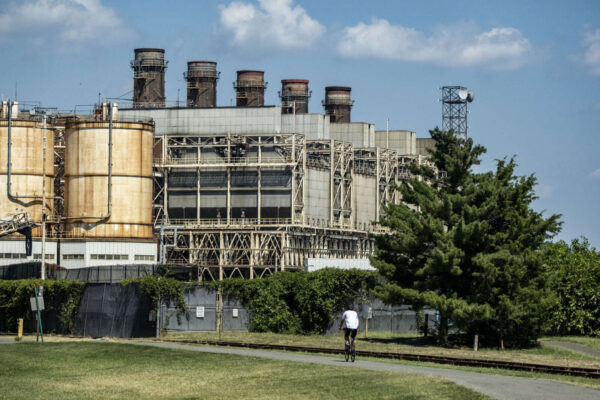
As developer Hilco Redevelopment Partners (HRP) heads into the ambitious redevelopment of the GenOn Power Plant, the developer laid out some of their plans for the complex process of breaking the site apart.
Representatives of the developer spoke last week to the Alexandria Local Emergency Planning Committee (LEPC) — full disclosure, this reporter is on the LEPC — about how the developers plans for abatement, remediation and deconstruction. The discussion was a follow-up to a previous LEPC meeting with Deputy Director for Infrastructure and Environmental Quality Bill Skrabak.
Mary Catherine Gibbs, land use counsel for HRP, said 2024 will likely be dominated by permit hearings for the project, with deconstruction and abatement starting in early 2025 — slightly later than the timeline laid out months ago.
The project is notable for the complexity of the environmental work that will go into making the former industrial plant a site safe for human habitation. Julianna Connolly is leading the remediation of the site and explained that remediation refers to anything on the ground level and below — like analyzing chemicals in the soil — while abatement refers to any of the environmental work above ground.
Connolly said there some of the sites of environmental contamination are already known.
“There’s an area on the site between the building and the river that had a known release from underground storage tanks,” Connolly said. “[They’re] still there, but closed.”
Connolly said the previous owner did remediation work to clean up the oil, but there’s still a residual impact on site that will need to be cleaned up.
Meanwhile, Connolly said her team has taken samples from across the site looking for more contamination — though the team hasn’t been able to sample under buildings yet. The early results, Connolly said, have been generally promising.
Metal content in the soil is generally below the standards set by the Virginia Department of Environmental Quality (Virginia DEQ). The main notes of concern in the soil samples are thallium, iron and manganese found above screening levels at a few locations. The screenings haven’t picked up polychlorinated biphenyls — a substance Connolly said is used to keep oil from lighting on fire — but she said it’s likely they’ll be found when her group checks closer to the transformers on-site.
Connolly said the next steps for her team are working through risk assessments for the site and developing a remediation plan.
“We already know we’re going to be working up near where the petroleum was, but we’re also identifying [other locations] on the site,” Connolly said. “We’re watching residual contamination very closely.”
For the above ground stuff, Nicholas Pullara, Vice President of development for HRP, said his team is combing through the site collecting regulated materials like asbestos, lightbulbs, electronic equipment and more.
“We’ve found asbestos, quite a bit of it, but it’s in good condition,” said Pullara. “We’ve found a slew of lightbulbs, things of that nature. We’re developing plans to remove all that prior to deconstruction.”
Pullara said HRP’s plan is to take the main power plant apart piece by piece rather than bringing it down all at once.
“We’re going to be sectioning out portions of the building and lowering them to ground piece by piece,” Pullara said. “We’re going after this in a very surgical [way] from a deconstruction perspective.”
For the eventual building deconstruction, rodent control will be put in place to keep a vermintide from flooding the nearby neighborhood. Pullara said HRP is looking for “non-poison solutions.”
For controlling dust from the site, Pullara said HRP will be using a lot of water.
“We’re going to use a lot of water,” Pullara said. “Asbestos needs to be wet when we put it in the bag… Water is key to dust mitigation. [We’ll have] high speed fans blowing a lot of water in a specific direction in a controlled manner. We want to focus the water where we’re creating that dust.”
Monitoring equipment will be set up for dust and vibrations from the site as well. Connolly said they know the air monitoring equipment works in in part because the smoke from the wildfires set off alarms at HRP’s project in Philadelphia.
Earlier discussion of removing pieces of the industrial plant from the site had indicated that barges might be an alternative to using trucks, but Pullara said the logistics at the site don’t work for removing debris into barges on the river.

